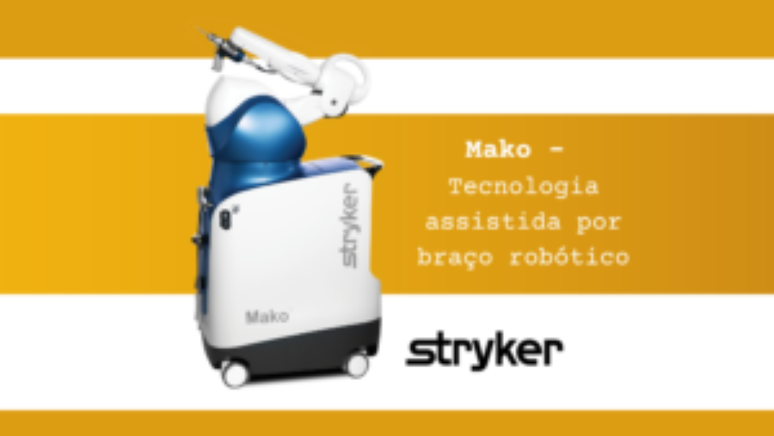Stryker Mako SmartRobotics™ “Mako’s 3D CT allows me to create a customized plan based on each patient’s specific anatomy, all before entering the operating room. During surgery, I can validate the plan and make any necessary adjustments while guiding the robotic arm to execute this plan. It’s wonderful to be able to offer this transformative technology across our entire line of joint replacement services to perform total knee, total hip and partial knee replacements.” Total knee arthroplasty has become an increasingly common option for those needing a “new knee.” This surgery effectively corrects varying levels of joint destruction, deformity, and loss of knee mobility. It is a minimally invasive surgery that performs biomechanical replacement, restoring both movement and quality of life to patients. The excellent news lies in the advancement of technologies related to knee prostheses, which are now lighter and more resistant and with the combined use of Stryker’s Mako Total Knee, which makes the operation more efficient. This allows patients who have undergone this type of implant to return to sporting activity. A study published by the Brazilian Journal of Sports Medicine concluded that it is not only possible, but also recommended that people who have successfully undergone knee replacement surgery and have a healthy postoperative period resume their physical activities. This return not only benefits self-esteem, but also contributes to improving the quality of life.
References
1. Kayani B, Konan S, Pietrzak JRT, Haddad FS. Iatrogenic bone and soft tissue trauma in robotic arm-assisted total knee arthroplasty compared to conventional jig-based total knee arthroplasty: a prospective cohort study and validation of a new classification system. J Arthroplasty. 2018;33(8):2496-2501. doi:10.1016/j. art.2018.03.042
2. Hozack WJ. Multicenter analysis of outcomes after robotic arm-assisted total knee arthroplasty. Bone Joint J:Orthop Proc. 2018;100-B(Supp_12):38.
3. Kayani B, Konan S, Tahmassebi J, Pietrzak JRT, Haddad FS. Robotic arm-assisted total knee arthroplasty is associated with improved early functional recovery and reduced time to hospital discharge compared with conventional jig-based total knee arthroplasty: a prospective cohort study. Bone Joint J. 2018;100-B(7):930-937. doi:10.1302/0301-620X.100B7.BJJ-2017-1449.R1
4. Mahoney O, Kinsey T, Mont M, Hozack W, Orozco F, Chen A. Can computer-generated 3D bone models improve the accuracy of total knee component placement compared to manual instrumentation? A multicenter prospective evaluation. Poster presented at: 32nd Annual Congress of the International Society for Technology in Arthroplasty (ISTA); 2-5 October 2019; Toronto, Canada.
5. Kolisek FR, Chugtai M, Mistry JB, et al. Results of the second generation tapered wedge femoral stem. Surg Technol Int 2016;28:275-279.
6.AAOS. Projected volume of primary and revision total joint replacement in the United States from 2030 to 2060. http://aaos-annualmeeting-presskit.org/2018/research-news/sloan_tjr/. Accessed May 9, 2018.
Source: Terra
Ben Stock is a lifestyle journalist and author at Gossipify. He writes about topics such as health, wellness, travel, food and home decor. He provides practical advice and inspiration to improve well-being, keeps readers up to date with latest lifestyle news and trends, known for his engaging writing style, in-depth analysis and unique perspectives.










